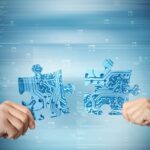
If you aspire to enhance the outcomes of your business, harnessing the power of Key Performance Indicators (KPIs) and metrics can prove to be a highly effective strategy.
KPIs are quantifiable objectives that offer directional insights into your company’s progress, while metrics are instrumental in evaluating the performance of processes, programs, or activities that contribute to the realization of KPIs.
When employed, KPIs and metrics can contribute to enhancing business outcomes by shedding light on areas that demand alterations or improvements, as well as identifying areas where you are excelling.
For instance, when you observe an escalation in your customer acquisition costs, the use of KPIs and metrics can guide you in pinpointing the sources of these expenses and devising strategies to curtail them.
To maximize the benefits of KPIs and metrics, first identify the principal objectives of your business and subsequently align your KPIs and metrics with these objectives. Once you have a clear comprehension of your goals, you can embark on the development of specific metrics that will facilitate tracking your progress and facilitating improvements.
So, how can you implement this approach? Let’s explore a few tips for leveraging KPIs and metrics to advance the performance of your most critical goals and objectives.
What Are Your Business Goals, and How Do Metrics and KPIs Support Those Goals?
Whether you’re a small-business owner, entrepreneur, or part of a large corporation, setting business goals provides a clear sense of direction and purpose for your day-to-day activities. Unfortunately, many individuals find that they often neglect to establish their objectives properly. If you fall into this category, it’s time to introduce structure into your goal-setting process by employing KPIs.
For KPIs to be effective, it’s imperative to ensure they align with your business goals. Therefore, before delving into the creation of specific KPIs, take the necessary time to define and fully understand your objectives.
Once your goals are well-defined, you can formulate specific metrics that facilitate tracking and enhancing your progress. A recommended method for doing this is by applying the SMART goal-setting model, which stands for:
- Specific
- Measurable
- Attainable/Achievable
- Relevant
- Time-bound
For instance, if one of your business goals is to increase revenue by 20%, a corresponding KPI could be generating $120,000 in revenue per month.
After establishing your KPIs and goals, regular progress tracking becomes essential. This enables you to gauge the effectiveness of your strategies and make necessary adjustments as you move forward.
How Can Metrics Help Improve Business Outcomes?
While KPIs offer a high-level view of your progress, metrics are employed to measure the performance of processes, programs, or activities that contribute to the attainment of KPIs.
In other words, metrics allow you to drill down and pinpoint the exact areas where changes or improvements are needed to reach your goals.
For example, if you aim to reduce customer acquisition costs, metrics help you measure and monitor the performance of various customer acquisition channels. This includes tracking metrics such as the number of leads generated from each channel, conversion rates, average sales prices, and more.
By assessing and measuring the performance of your customer acquisition channels, you can identify the most effective ones and make necessary adjustments to enhance their performance.
To effectively utilize metrics, it’s crucial to grasp the concepts of attribution and causality. Attribution concerns the assignment of credit or responsibility for a particular outcome, while causality explores the relationship between two variables.
For example, if a marketing campaign results in a 10% increase in revenue, understanding what caused this increase and whether the campaign was responsible is crucial. Causality comes into play here; while the marketing effort may have contributed to the outcome, other factors like shifts in customer demographics or spending habits could have also impacted revenue.
To prevent errors in measurement and attribution, ensure that the metrics you employ align with your objectives and KPIs. This guarantees that you’re not tracking irrelevant information that doesn’t offer genuine insights into your goal achievement or business performance improvement. Occasionally, it’s helpful to review examples of KPIs used by similar organizations.
How Can KPIs and Metrics Enhance Business Performance?
While KPIs and metrics are both integral to providing directional insights into your business’s progress, they offer distinct advantages that can be harnessed to achieve superior results.
KPIs predominantly focus on the high-level overview of your company’s progress, while metrics dive deeper into the specifics, delivering a comprehensive understanding of what’s transpiring. This depth of insight is invaluable when determining where to channel efforts for better business outcomes.
Moreover, KPIs help in monitoring overall progress and ensuring that you remain on the right track towards your goals. They also enable the identification of both successes and potential issues, allowing for timely corrective action. EyeAppoint offers many services that can help improve key metrics from marketing to online scheduling. We are here to help you reach your goals.
On the other hand, metrics unveil the underlying causes of problems and areas necessitating improvement. By comprehending the relationships between various factors, you can make informed decisions about resource allocation to achieve optimal results.
When KPIs and metrics are employed in conjunction, they present an accurate depiction of your business’s performance. Combined with an up-to-date tracking dashboard, this empowers you to rapidly pinpoint areas of concern, make adjustments for performance enhancement, and attain greater success in the future.
Conclusion
To achieve success, it’s crucial to utilize KPIs and metrics in tandem to steer your business’s performance and reach superior results. By applying these principles, you can adapt and make necessary changes to accomplish your most important goals. Utilizing EyeAppoint can give you automated systems and services to help you recognize your business goals.



